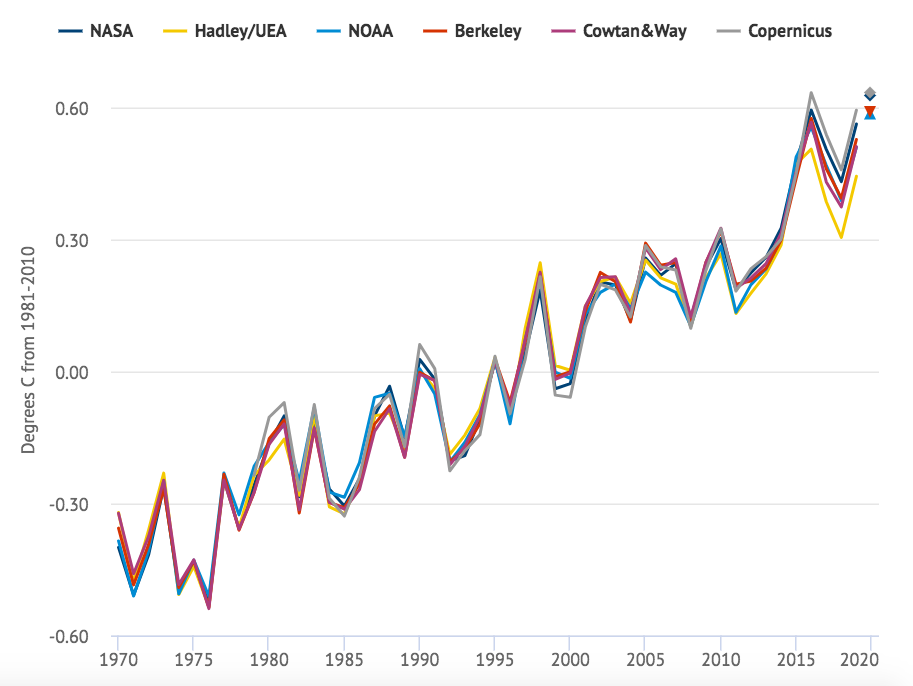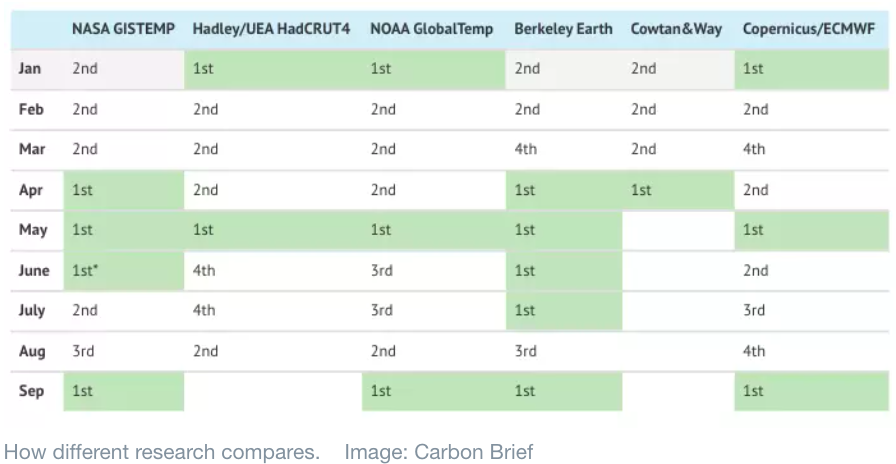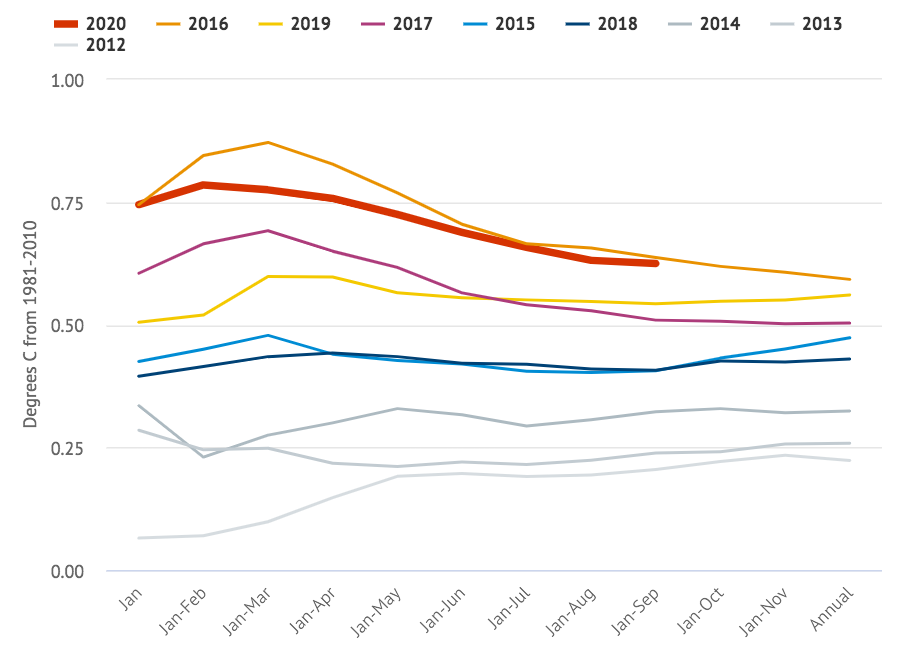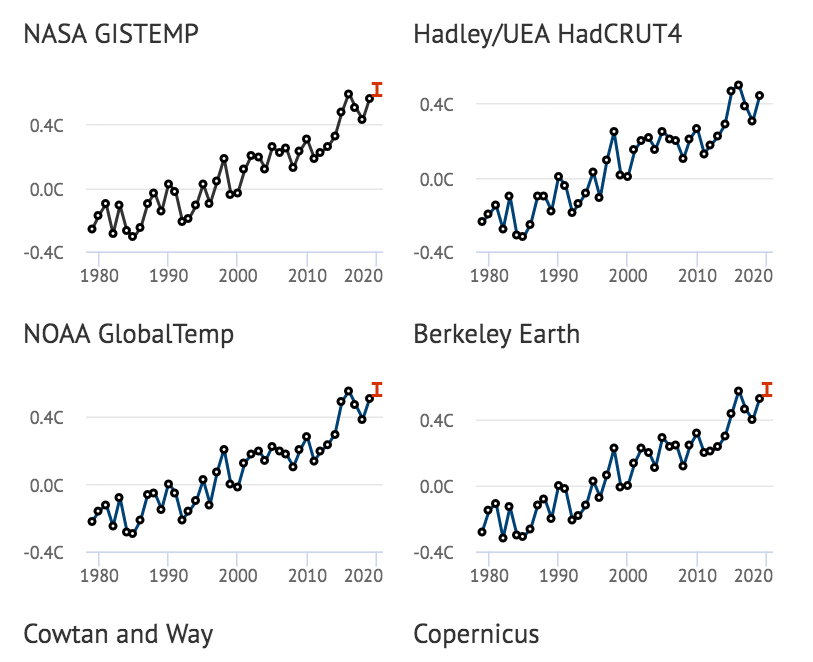Is 2020 about to become the warmest year on record?
Climate change in 2020 is real. The year 2020 is going to be memorable for Covid-19, but also for being the warmest year since mid 1800s. Yes, people, 2020 might become the warmest year on record, according to different sources of which NASA. And that is not a good thing.
And it’s not even an El Niño year with extreme weather. The year 2020 was the warmest year ever caused by high numbers of greenhouse gases, like methane, nitrous oxide and CO2. At the same time, the arctic ice extent was at a lower level than ever.
Climate change in 2020 is happening. The last couple of year are mainly characterized by new weather records all around the world. At the same time, sea ice is reducing in a never seen pace. In the past fifty years, there has been a global warming trend. In 2020 this trend has continued.
Ok, a lot of words, but how does this translate into clear understandable data? Let me tell you.

Record warmth in 2020 underlined by different research groups
We’ve taken data of surface temperature globally from a few big climate research centers around the globe: NASA; Berkeley Earth; Copernicus/ECMWF; NOAA; Met Office Hadley Centre/UEA; and Cowtan and Way.
In the figure above we show the temperature anomalies, which is changes relative to the 1981 to 2010 average temperature. This shows how much the temperature has actually risen compared to the average temperature. And not only on one location, but around the globe.
Help our climate a little bit: Download the browser that plants trees!
Or another one. The table below shows the ranking of the temperature in the months of the year. ‘1st’ means the number one warmest temperature for that month. In 2020, we have seen many warmest months ever. That is not a good thing. The table shows how different research stations register records in temperature. Compare these results with you own observations from where you live. Have you experienced first hand records in weather conditions?

And take the figure below, from the NASA GISTEMP dataset. It shows the average temperature per month in 2020 in comparison to earlier years. It could be that in the last few months of 2020 the La Niña effect, the counterpart of El Niño bringing cooler temperatures, will decrease the data a bit, but the effect of La Niña will mostly be experienced in 2021.
What to wear tomorrow? Read it here!

Predictions on climate change in 2020
Can we already predict to what extent these numbers on climate change in 2020 will continue? Sure we can.
The above mentioned research centers on climate change have given predictions on the probability of 2020 becoming the warmest year based on temperature. NASA and Copernicus show a lower probability for 2020 becoming the warmest year since the data collection. NOAA and Berkeley show a higher probability, of which NOAA shows a 61% chance of 2020 becoming the warmest year since the mid 1800s.
In fact, the chance of 2020 not becoming the warmest of, after 2016, the second warmest, is very small.
What do models on climate change predict?
Different centers on climate research provide scientifically proven predictions on different variables causing climate change, like emissions, greenhouse gases and other factors.
Look at the models below, showing the temperature from the 1980’s tot 2020, given by different climate research centers. The average temperature is rising. Not specifically every year, but definitely from a bigger perspective. Do realize that 40 years is nothing in the total age of the earth. Forty years is an extremely small period of time in which the temperature has risen extremely fast.

Greenhouse gas and climate change in 2020
Greenhouse gas has been an important contributor to the rise of temperature on earth in 2020. The concentrations of greenhouse gas have in fact reached a new record. Greenhouse gas is produced by agriculture, fossil fuels and land use.
Greenhouse gases, like CO2, nitrous oxide (N2O) and methane (CH4) cause additional heating up of the earth. Like you probably already now, CO2 is de most important factor in global warming. CO2 has caused about 50% of the increase in radiative forcing since 1750, methane about 29% and nitrous oxide about 5%. Other factors cause the remaining 16%, like carbon monoxide and CFO’s.
Sea level rising by arctic ice melting
The world holds a lot of ice mass in both the arctic sea (Antarctica) and the North Pole. Because of global warming, ice melts causing the sea level to rise.
This happens every year, though. In the summer, ice melts, while in winter the ice mass gets bigger again. However, last decades more ice melts, while less ice is added in winter times. Less ice on this planet adds to global warming. At the same time, sea level rising is another global environmental problem.
As data shows, ice extent was at an extremely low level in the summer of 2020, showing records levels in July 2020. In the same year, sea ice recovery in winter months was also at an extremely low level. Uff, that does not look good.
Go green, but look fine. Walk sustainable shoes.
Climate change in 2020 continues. Now what?
Good question. Might it already be too late to change our fate? Perhaps. But do realize that nature is resilient. It might not be too late yet, but we should change our way of living to a way that does not damage the earth as much.
What will you change today to reduce your ecological footprint?
Start small, but don’t forget the big picture. We should all reduce the amount of damage we cause. Our choices have a bigger impact. We can also influence big companies to change their business methods. We have power! So use your power, but start by changing your own lifestyle.